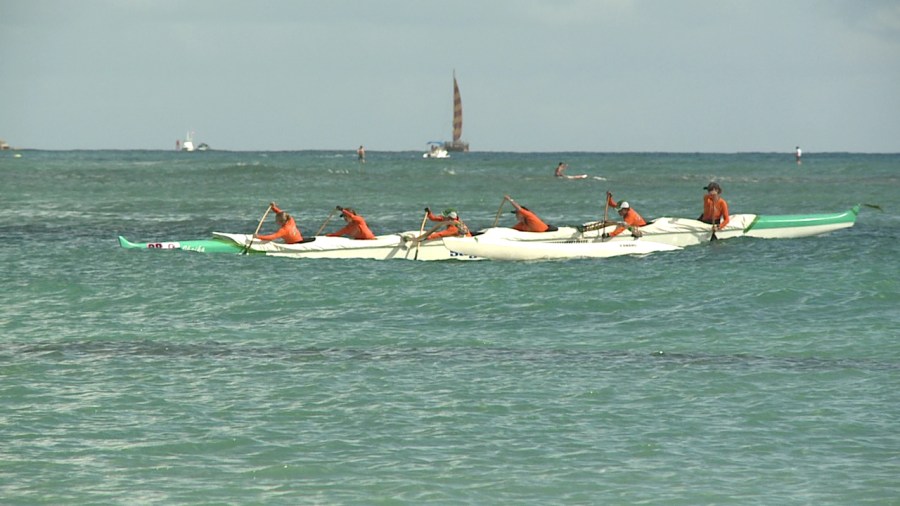HONOLULU (KHON2) — The iconic Na Wahine O Ke Kai canoe race kicks off this weekend and it’s a huge undertaking. Planning starts months in advance, proving it truly takes a village to make it happen. The limited resources on Molokai make it even more challenging.
Na Wahine O Ke Kai and Molokai Hoe are the premier paddling events in the world, but hosting them on the island of Molokai is no easy feat.
Lori Buchanan and her husband Moku have worked behind the scenes, helping with logistics for more than 40 years and they’ve been an integral piece of the puzzle.
“Whatever they need in order to make that happen on Molokai we try to support them,” said Buchanan, Molokai resident. “Everything from trying to figure out how to get 2,000 people in and out of a single lane dirt road in two hours, to what about the rubbish. After the event, what about porta-potties? What about the condition of the road? Are trees hanging over that need to be cut? How’s the boats in the harbor? Do they need assistance?”
The list goes on and on.
Moku added, “There’s a lot of moving parts and Molokai is always a challenge because we’re not really equipped for having big groups.”
No matter the obstacle, the Buchanans and dozens of others involved with coordinating and working before, during and after the races have always pulled through.
This year, one of the biggest issues was the condition of the dirt road to the harbor.
The road to Hale O Lono is the only way to get all the canoes down to the starting point for the race. There’s a lot of work that needs to be done before that can happen.
“It’s in the worst disrepair that we’ve ever seen,” said Lori. “Transportation is an issue on Molokai. Many have to get on 55-passenger buses and mini buses and those buses have to be able to traverse down that dirt road safely and then back. So that’s not possible right now.”
The four-year hiatus of the races and heavy rains contributed to the damage. Despite all the challenges, Moku said they are proud to be part of it.
“So it’s nice we can continue to support that and continue that legacy. It’s a cultural thing, we all used to paddle when we were small too. We all paddled from when we were young until we became adults. Just trying to keep it going and I think my kids will keep doing what I’m doing after I’m gone,” Moku said.
KHON2 will stream both the Nā Wahine o Ke Kai and the Molokai Hoe on KHON2.com and broadcast on KHII.
